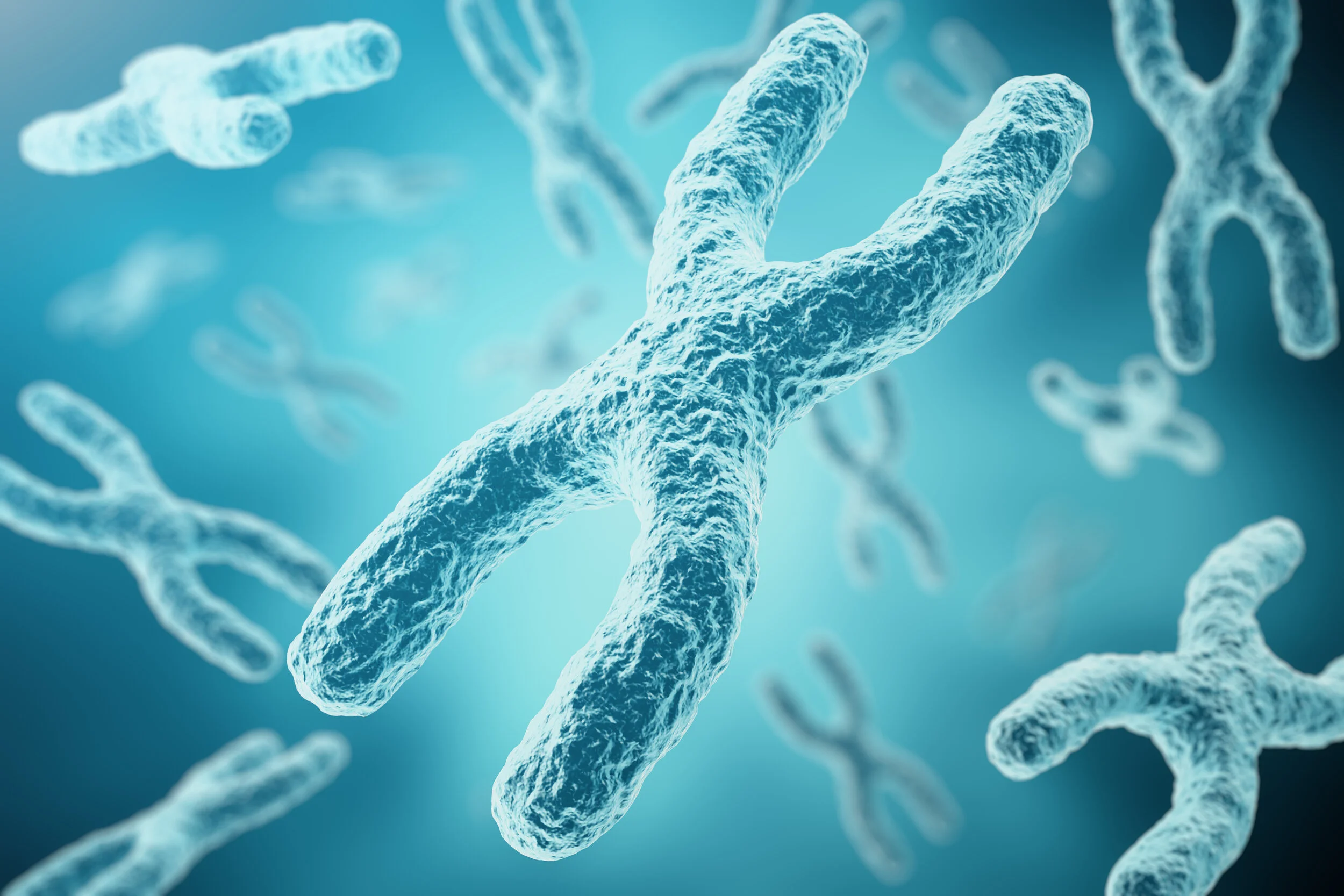The QTRACE® Analysis System (CE IVD) for Chimerism Testing
The QTRACE® Analysis System is a CE IVD kit intended for routine monitoring of the levels of recipient-derived white blood cells in peripheral blood and/or bone marrow. It is designed to detect distinct small insertion/deletion (INDEL) markers in the genome by the highly sensitive qPCR methodology. The QTRACE® Analysis System meets the needs of any research application that requires highly sensitive detection and quantification of the genome of one individual in the background of another individual or individuals.
The QTRACE® Analysis System uses qPCR technology and consists of DNA genotyping plates, 46 individual quantification assays, one reference assay, and TRACE Analysis™ Software. The QTRACE® INDEL Assays are able to differentiate, and then quantify, the contributors to a human-mixed DNA sample.
The procedure for determining the level of a genome of interest in a sample consists of two parts: a genotyping test and a quantification test.
Genotyping Test
In the initial genotyping test, the DNAs that comprise a mixed DNA sample are analyzed using a QTRACE® Genotyping Plate, to identify all of the informative assays for the samples. An informative assay is an assay for a marker allele that is present (positive) in one individual genome and absent (negative) in the other genome. The genotyping plate contains a duplicate set of assays: the 46 quantification assays and the reference (RNaseP) assay that serves as both a positive control and a No Template Control (NTC).
Monitoring (Quantification) Test
In the monitoring test, one or more of the informative assays identified in the genotyping test is used to quantify the DNA of interest in an unknown sample relative to a reference sample (calibrator). Any of the informative assays identified in the genotyping test can be used to perform a quantification test. The amount of the genome positive for the informative allele in the unknown sample is determined relative to the amount of that same genome in the reference sample, and the result is expressed as a percentage (ratio).
QTRACE® Genotyping Plate
The DNAs that comprise a mixed DNA sample are analyzed using a QTRACE® Genotyping Plate and QTRACE® qPCR Master Mix, to identify all of the informative assays for the samples. An informative assay is an assay for a marker allele that is present (positive) in one individual genome and absent (negative) in the other genome.
The genotyping plate contains a duplicate set of assays: the 46 quantification assays and the reference (RNaseP) assay that serves as both a positive control and a No Template Control (NTC), pre-dispensed and dried in an optical qPCR plate. The QTRACE® qPCR Master Mix comes supplied with dUTP and UNG for built-in carryover contamination control.
QTRACE® genotyping plate layout
The QTRACE® Genotyping Plates are packaged in air-tight, notched pouches for easy ambient storage and use. The typing protocol is a breeze. Once qPCR master mix and DNA are mixed, samples are dispensed to pre-arrayed assays in the optical plate.
QTRACE® INDEL Assay
Once recipient specific markers have been found, quantification is performed to monitor engraftment. In the monitoring test, one or more of the informative assays is used to quantify the DNA of interest in an unknown sample relative to a reference sample. Any of the informative assays identified in the genotyping can be used to perform monitoring.
The fraction of DNA positive for the informative marker in the unknown composition is determined relative to the pure reference sample DNA and the result is expressed as a percentage (ratio).
The Standard for qPCR Chimerism Monitoring
The QTRACE® Assays represent a rapid (results are obtained within 2.5 hours) and sensitive (the validated detection limit is 0.1% minor component of a genomic DNA mixture using 150 ng DNA input) solution for chimerism testing.
The wide coverage - 46 INDEL Assays distributed across the human genome - facilitates the choice of informative assays using the Standard Genotyping Plate. For patients receiving a second transplant or for highly similar siblings, the Extended Panel of QTRACE® INDEL Assays with 34 additional markers is also available.
RNase P Assay is recommended as the standard reference assay for chimerism analysis.
QTRACE® Assay Targets
An Ultimate Chance of Finding an Informative Assay
The informativeness of a multi-locus genotyping panel is a measure of the probability of finding at least one informative assay between two individual genomes (or DNA samples). Informativeness is calculated from the population frequency estimates of the alleles used to make up a multi-locus genotyping panel, and thus differs between ethnic populations. In addition, the informativeness of any panel of polymorphic loci is higher in unrelated individuals than in related individuals. Using the 46 QTRACE® Assays, probability of finding at least one informative assay for a donor-recipient pair is higher than 99%.
The Extended Panel of QTRACE® INDEL Assays comprises a set of 34 additional INDEL markers designed to broaden the Standard Panel of 46 QTRACE® Assays for chimerism testing. The Extended Panel should prove useful in rare cases involving multiple donors.
TRACE Analysis™ Software
The TRACE Analysis™ Software was designed specifically for the QTRACE® Analysis System. The software provides a streamlined workflow for both the genotyping and quantification tests. The software guides the user through assay setup, performs data analysis, generates results reports and stores the data collected for samples over time.
MONITORING
Measure Fractional Abundance of Donors/Recipients
High Sensitivity Provides Earlier Detection Than STR
Unambiguous Data, Rapid Analysis
REAGENTS
Pre-Arrayed Typing Plates
80 INDEL Monitoring Assays
HLA LOH Assays Targeting All Major Loci
SOFTWARE
Automated Protocols
Multi-Instrument Capability
Longitudinal Sample Tracking







